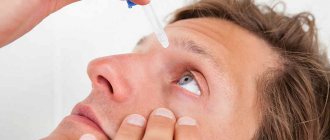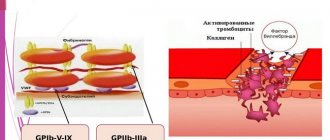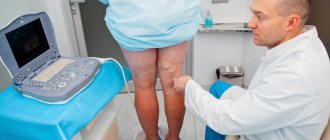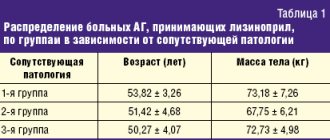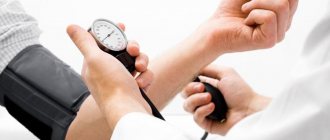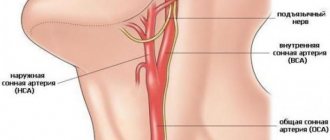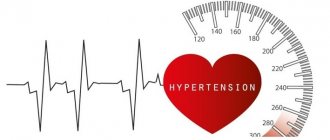- Immunology and immune status
- What problems can immunological research solve?
- Classification of immunodeficiency states
- Cost of tests for immune status
Immunology is the study of the organs, cells and molecules that make up the immune system, responsible for detecting and eliminating foreign substances.
Immunology studies the structure and function of the immune system, its response to pathogens, the consequences of the immune response and how to influence them. The Latin word "immunitas" means "freedom from disease", this term is enshrined in the 1869 edition of the French dictionary.
Immune defense mechanisms are always triggered when a particular organism encounters one or another antigenically foreign material - be it bacteria, viruses, mutationally altered body cells (tumor cells), tissue and organ transplants, or simple chemical compounds that are given immunogenic properties.
The need to assess human immunity arises in the case of allergic, autoimmune diseases and immunodeficiencies, when it is necessary to identify the impaired link of immunity, conduct monitoring in order to select a treatment method, assess its effectiveness and predict the outcome of the disease.
The most complete picture of the state of a person’s immunity is given by an immunological blood test - immune status (immunogram) . This analysis consists of two components. Humoral immunity gives an idea of the concentration of immunoglobulins and other protective proteins in the blood. Cellular immunity complements the immunological blood test and gives an idea of the quantity and quality of protective blood cells - lymphocytes, which provide antiviral immunity.
Detailed description of the study
The immune system brings together many different organs and cells. The task of immunity is the timely recognition of foreign cells and their subsequent destruction, the formation of immunological memory for a rapid response to pathogenic factors in the future.
With repeated infectious diseases or deterioration of health, a decrease in immunity can be suspected. His condition can be assessed by a number of tests.
Clinical blood test with leukocyte formula and ESR
Blood is the internal environment of the body, which consists of the liquid part of the plasma and the formed elements suspended in it: red blood cells, leukocytes and platelets.
This analysis allows you to determine the concentration of hemoglobin, estimate the number of blood cells, as well as a number of other important indicators (ESR, color index) and is used to assess the general state of human health, and also helps to identify various diseases: blood cancer, anemia, infectious diseases.
This study estimates the abundance of three cell types:
Red blood cells are the most numerous group of all the formed elements of blood. They contain a special protein - hemoglobin - and together with it they transport oxygen throughout the body. The standard lifespan of a red blood cell is 120 days. The body constantly degrades old red blood cells and produces new ones, but a number of pathogenic factors can affect these processes.
A decrease in hemoglobin concentration causes disruption of the oxygen supply to tissues and is associated with weakened immunity, as well as an increased risk of infections.
White blood cells are cells that are constantly present in the blood, lymphatic system and tissues. They are an important part of the immune system, provide protection against infections, and are also involved in the formation of inflammation and allergies. There are five different types of white blood cells, each with a different function:
- Neutrophils destroy infectious agents;
- Lymphocytes provide an adequate immune response;
- Basophils are involved in allergic and inflammatory reactions;
- Eosinophils are involved in the formation of an allergic reaction and antiparasitic immunity;
- Monocytes provide phagocytosis - the capture and destruction of pathogenic microorganisms.
The number of leukocytes in the blood is relatively stable. A change in the number of leukocytes may be associated with the development of a pathological process in the body (infectious disease, inflammation, etc.).
Platelets are blood cells that circulate in the blood and are necessary for its normal clotting. When an injury occurs and bleeding begins, platelets help stop the bleeding by sticking to the injury site and forming a blood clot.
Platelets are also one of the key components of the innate immune system. They can recognize microbial pathogens, thereby participating in the immune response.
Diseases or conditions that are associated with low platelet levels (thrombocytopenia) or decreased platelet function increase the risk of bleeding and anemia, and also negatively affect the overall health of the immune system.
ESR (erythrocyte sedimentation rate) is determined during a clinical blood test . This indicator reflects the speed at which red blood cells (after treatment with a special reagent) settle in the vessel under the influence of gravity.
ESR depends on the ratio of protein fractions in the blood and the number of red blood cells, and changes in the indicator are observed against the background of acute or chronic inflammatory processes and cancer.
25-OH vitamin D total
Vitamin D (vitamin D) is a fat-soluble vitamin that performs the function of a prohormone in the body, that is, a precursor of hormones. Depending on the origin (synthesis in the body or intake from the outside), there are two types of vitamin D - vitamin D2 (ergocalciferol) and vitamin D3 (cholecalciferol).
Vitamin D deficiency occurs as a result of reduced synthesis in the skin, insufficient dietary intake, or impaired absorption in the small intestine.
Vitamin D deficiency is manifested by damage to the musculoskeletal system with decreased density and disruption of bone structure, as well as severe muscle and joint pain. A lack of vitamin D can be one of the reasons for the development of certain autoimmune and oncological pathologies, diabetes mellitus.
It is known that the active form of vitamin D - 1,25(OH)2D3 (calcitriol) enhances the antimicrobial effect of cells of the immune system (macrophages and monocytes). Vitamin D deficiency significantly reduces the effectiveness of the immune response.
Total immunoglobulin IgE
Immunoglobulins E (IgE) are antibodies that are produced by the immune system in response to foreign particles. As a rule, IgE is present in the blood in small quantities.
Immunoglobulins play a key role in the formation of the immune response. This study measures the total amount of class E immunoglobulins in the blood and is used to identify certain immunopathological diseases - hypogammaglobulinemia, etc.
Thus, the “Your Immunity” complex includes the following tests:
- Clinical blood test with leukocyte formula and ESR (with microscopy of a blood smear to detect pathological changes) (venous blood);
- 25-OH vitamin D total (25-OH vitamin D2 and 25-OH vitamin D3, total result);
- Total immunoglobulin IgE.
The results of this set of laboratory tests will help the doctor assess the general condition of the human immune system, identify and correct immunity disorders.
A detailed description of the studies and reference values are presented on the pages with descriptions of individual studies.
Cost of tests for immune status in our medical center
| Study title | Clinical material | Result | Expiration date | Price |
| Immune status | ||||
| Study of lymphocyte subpopulations | ||||
| Minimum panel: CD3,CD4,CD8,CD19,CD16(56), CD3+HLA-DR+, CD3+CD16(56)+(EK-T), CD4/CD8 | blood with heparin | % content and abs. count | 5 w.d. | 3100.00 rub. |
| Extended panel: CD3,CD4,CD8,CD19,CD16(56), CD3+HLA-DR+, CD3+CD16(56)+(EK-T), CD8+CD38+, CD3+CD25+, CD3+CD56+, CD95, CD4 /CD8 | blood with heparin | % content and abs. count | 5 w.d. | 4940.00 rub. |
| Level 1 panel: CD3,CD4,CD8,CD19,CD16,CD4/CD8 | blood with heparin | % content and abs. count | 5 w.d. | 2210.00 rub. |
| Immunoregulatory index (CD3,CD4,CD8, CD4/CD8) | blood with heparin | % content and abs. count | 5 w.d. | 1890.00 rub. |
| Activated lymphocytes CD3+CDHLA-DR+,CD8+CD38+CD3+CD25+CD95 | blood with heparin | %content | 5 w.d. | 2730.00 rub. |
| “Naive” CD4 lymphocytes/memory cells CD45 PC5/CD4 FITC /CD45RA PE,CD45 PC5/CD4 FITC/CD45RO PE | blood with heparin | %content | 5 w.d. | 1680.00 rub. |
| Functional markers | ||||
| CD4/CD4OL | blood with heparin | %content | 5 w.d. | RUR 780.00 |
| CD4/CD28 | blood with heparin | %content | 5 w.d. | RUR 780.00 |
| CD8/CD28 | blood with heparin | %content | 5 w.d. | RUR 780.00 |
| CD8/CD57 | blood with heparin | %content | 5 w.d. | RUR 780.00 |
| B1 cells. CD5+CD19+ | blood with heparin | %content | 5 w.d. | 2840.00 rub. |
| Humoral immunity | ||||
| Immunoglobulins A, M, G | blood (serum) | count | 5 w.d. | RUR 780.00 |
| Immunoglobulin E (IgE) | blood (serum) | count | 5 w.d. | RUR 780.00 |
| Immunoglobulin A (IgA) | blood (serum) | count | 5 w.d. | 290.00 rub. |
| Immunoglobulin M (IgM) | blood (serum) | count | 5 w.d. | 290.00 rub. |
| Immunoglobulin G (IgG) | blood (serum) | count | 5 w.d. | 290.00 rub. |
| Functional activity of neutrophils | ||||
| NST test | blood with heparin | count | 5 w.d. | 420.00 rub. |
| Complement components | ||||
| C3 | blood (serum) | count | 5 w.d. | RUB 730.00 |
| C4 | blood (serum) | count | 5 w.d. | RUB 730.00 |
| Common circulating complexes (CECs) | blood (serum) | count | 5 w.d. | 240.00 rub. |
| Interferon status | ||||
| Interferon status without determining drug sensitivity | blood with heparin | count | 10 w.d. | RUB 2870.00 |
| Neutralizing antibodies to interferon preparation | blood (serum) | count | 10 w.d. | 2840.00 rub. |
| Sensitivity of blood leukocytes to interferon drugs | ||||
| Sensitivity of blood leukocytes to Reaferon | blood with heparin | count | 10 w.d. | 520.00 rub. |
| Sensitivity of blood leukocytes to Roferon | blood with heparin | count | 10 w.d. | 520.00 rub. |
| Sensitivity of blood leukocytes to Wellferon | blood with heparin | count | 10 w.d. | 520.00 rub. |
| Sensitivity of blood leukocytes to Intron | blood with heparin | count | 10 w.d. | 520.00 rub. |
| Sensitivity of blood leukocytes to Realdiron | blood with heparin | count | 10 w.d. | 520.00 rub. |
| Sensitivity of blood leukocytes to Genferon | blood with heparin | count | 10 w.d. | 520.00 rub. |
| Sensitivity of blood leukocytes to Interal | blood with heparin | count | 10 w.d. | 520.00 rub. |
| Sensitivity of blood leukocytes to Gammaferon | blood with heparin | count | 10 w.d. | 520.00 rub. |
| Sensitivity of blood leukocytes to Betaferon | blood with heparin | count | 10 w.d. | 520.00 rub. |
| Sensitivity of blood leukocytes to interferon inducing drugs | ||||
| Sensitivity of blood leukocytes to Amiksin | blood with heparin | count | 10 w.d. | 520.00 rub. |
| Sensitivity of blood leukocytes to Neovir | blood with heparin | count | 10 w.d. | 520.00 rub. |
| Sensitivity of blood leukocytes to Cycloferon | blood with heparin | count | 10 w.d. | 520.00 rub. |
| Sensitivity of blood leukocytes to Ridostin | blood with heparin | count | 10 w.d. | 520.00 rub. |
| Sensitivity of blood leukocytes to Kagocel | blood with heparin | count | 10 w.d. | 520.00 rub. |
| Sensitivity of blood leukocytes to interferon immunomodulators | ||||
| Sensitivity of blood leukocytes to Lykopid | blood with heparin | count | 10 w.d. | 520.00 rub. |
| Sensitivity of blood leukocytes to Imunofan | blood with heparin | count | 10 w.d. | 520.00 rub. |
| Sensitivity of blood leukocytes to Polyoxidonium | blood with heparin | count | 10 w.d. | 520.00 rub. |
| Sensitivity of blood leukocytes to Imunomax | blood with heparin | count | 10 w.d. | 520.00 rub. |
| Sensitivity of blood leukocytes to Arbidol | blood with heparin | count | 10 w.d. | 520.00 rub. |
| Sensitivity of blood leukocytes to Galavit | blood with heparin | count | 10 w.d. | 520.00 rub. |
| Sensitivity of blood leukocytes to Gepon | blood with heparin | count | 10 w.d. | 520.00 rub. |
| Sensitivity of blood leukocytes to Glutoxim | blood with heparin | count | 10 w.d. | 520.00 rub. |
| Sensitivity of blood leukocytes to Taktivin | blood with heparin | count | 10 w.d. | 520.00 rub. |
| Sensitivity of blood leukocytes to Thymogen | blood with heparin | count | 10 w.d. | 520.00 rub. |
| Sensitivity of blood leukocytes to Immunal | blood with heparin | count | 10 w.d. | 520.00 rub. |
| Sensitivity of blood leukocytes to Imunorix | blood with heparin | count | 10 w.d. | 520.00 rub. |
| Sensitivity of leukocytes to drugs approved for use in children | ||||
| Sensitivity of leukocytes to Amiksin for children | blood with heparin | count | 10 w.d. | 470.00 rub. |
| Sensitivity of leukocytes to Arbidol for children | blood with heparin | count | 10 w.d. | 470.00 rub. |
| Sensitivity of leukocytes to Gepon for children | blood with heparin | count | 10 w.d. | 470.00 rub. |
| Sensitivity of leukocytes to Immunomax for children | blood with heparin | count | 10 w.d. | 470.00 rub. |
| Sensitivity of leukocytes to Imunofan for children | blood with heparin | count | 10 w.d. | 470.00 rub. |
| Sensitivity of leukocytes to Kagocel for children | blood with heparin | count | 10 w.d. | 470.00 rub. |
| Sensitivity of leukocytes to Lykopid for children | blood with heparin | count | 10 w.d. | 470.00 rub. |
| Sensitivity of leukocytes to Polyoxidonium for children | blood with heparin | count | 10 w.d. | 470.00 rub. |
| Sensitivity of leukocytes to Taktivin for children | blood with heparin | count | 10 w.d. | 470.00 rub. |
| Sensitivity of leukocytes to Thymogen for children | blood with heparin | count | 10 w.d. | 470.00 rub. |
| Sensitivity of leukocytes to Cycloferon for children | blood with heparin | count | 10 w.d. | 470.00 rub. |
| Sensitivity of leukocytes to Viferon for children (suppositories, ointment, gel) | blood with heparin | count | 10 w.d. | 470.00 rub. |
| Sensitivity of leukocytes to Grippferon for children (drops) | blood with heparin | count | 10 w.d. | 470.00 rub. |
r.d. — working day, count. - quantitative
Rating 3.62 (58 Votes)
Preparing for analysis
Before having an immunogram, the child must follow the following recommendations:
- the day before the test, eliminate emotional and physical stress, and also stop taking any medications (if possible);
- Children under one year old should not eat 40 minutes before the test;
- children aged 1 to 5 years should not eat 2-3 hours before the test;
- Children over 5 years old should not eat food 12 hours before the test.
Pure still water can be drunk without restrictions.
Indications
It is recommended to take an immunogram for your child if the following indications exist:
- frequent ailments, general causeless weakness, dizziness, nausea;
- situational or seasonal ailments (suspicion of bronchial asthma and allergies);
- frequent acute respiratory viral infections, prolonged infections that recur twice every three months or more often;
- constant exacerbations of chronic diseases;
- a history of autoimmune diseases (lupus, vasculitis, angioedema, myasthenia gravis and a number of others);
- constant relapses of herpes infection;
- suspected HIV;
- long-term therapy with antibacterial drugs, which does not produce results;
- long-term non-healing ulcers and wounds on the body.
An immunogram is prescribed strictly according to indications, by an immunologist-allergist. It makes sense to take a test before vaccination only if the child has a confirmed acquired or congenital immunodeficiency. In this situation, an immunogram will show whether the body can adequately respond to the introduction of the vaccine or whether the child needs a medical withdrawal.
Decoding the results
Normally, immunogram parameters should have the following values:
- B lymphocytes, CD19+ marker, 5-30% of the total number of lymphocytes;
- T lymphocytes, CD8+ marker, 40-80% of the total number of lymphocytes;
- NK killers or granular lymphocytes, marker CD56+CD16+, 5-15% of the total number of lymphocytes;
- phagocytic granulocytes, 20-70% of the total number of granulocytes;
- immunoglobulin IgA, 0-4 - deviations from the norm may indicate the patient has bronchial asthma, ARVI, diseases of the liver, connective tissue, lymphoid system;
- immunoglobulin Ig E should not be present normally; its presence indicates an allergy or helminthiasis;
- immunoglobulin Ig M, 0-2.4 - deviations from the norm indicate the presence of an acute infectious disease;
- immunoglobulin Ig G, 2.4–16 - deviations from the norm may indicate that the child has ARVI, HIV, liver diseases, allergies, as well as antibodies to infectious diseases suffered in the past.
A deviation from the norm is considered to be a difference in values of more than 20-40%. The interpretation of the results should only be carried out by a doctor, taking into account the results of additional studies.
